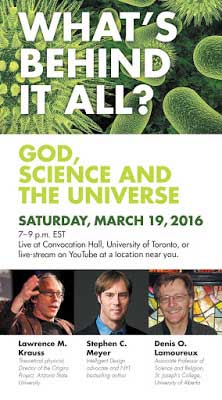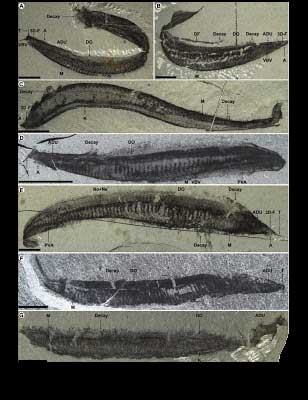Look at the way a river becomes thousands of separate tributaries as it nears the sea, a neat visual analogy for complexity—a single river that breaks off into multiple branches without direct application of intelligence being involved because thatʼs what water and land do together. That is an increase in complexity that illustrates how basic and inherent in nature complexity is.
Lena River Delta, Russia
The island complex at the north end of Spring Lake, Pool 2, in the Mississippi National River and Recreation Area shows a variety of floodplain forests, wetlands, and aquatic vegetation
The Yukon River Delta, Alaska
Changes in the connectivity of the channel network structure on the Wax Lake Delta reflect its growth. The Wax Lake Delta is the only portion of the greater Mississippi River Delta complex that is growing over time.
Mathematical models have been produced to help explain the formation of such complex intricate formations on earth. There are models based on detailed computational fluid dynamics as well as competing models such as rule-based cellular morphodynamic models. As we will see, the formation of such complex intricate non-living formations does not lend distinction to the ideas of Intelligent Design advocates at the Discovery Institute.
To understand how complexity arises from relative simplicity, letʼs start at the beginning…
Our cosmos had to cool down for the first sub-atomic particles to congeal out of the unbelievably high energies and temperatures at our cosmosʼs birth. As it began to cool the first subatomic particles congealed into atoms, and then due to the force of gravity (the basic attraction of masses to other masses) those simple atoms congealed into stars. The pressure of gravity pushed those simple atoms together until atoms with more protons and electrons began to arise. Then many stars eventually exploded and heavier even more complex atoms were formed by the force of such explosions including carbon, nitrogen, oxygen up to uranium and beyond. Then as planets and asteroids cooled down, along with the insides of comets, the carbon and other atoms in space began to bond together forming longer chains of atoms.
Simply by virtue of the process of the cosmos Cooling Down, and also by virtue of Masses Attracting Other Masses, complexity arose.
The earliest most violent energies of the cosmos cooled down and congealed into subatomic particles that congealed into simple atoms that were attracted to one another by gravity that formed stars that formed the whole range of more complex atoms that began to congeal into molecules, some of which congealed into longer self replicating molecules.
So the second law of thermodynamics and the attraction of mass to other masses brought forth ever more complexity.
Consider this further analogy, you take a bottle of ink and throw it at a wall. Smash! The ink spreads forth. In the middle, itʼs dense. But out on the edge, little droplets of ink get finer and finer and make more complicated patterns. In the same way, there was a big bang at the beginning of things and it spread. You and I, sitting here in this room, are way, way out on the fringe of that bang. We are the little curlicues on the furthest edges of the ink. So we define ourselves as being only that… as one very complicated little curlicue, way out on the edge of that explosion. Way out in space, and way out in time. But billions of years ago is when everything including “you” began. You donʼt feel that youʼre still the big bang. But you are… Youʼre not just something thatʼs a result of the big bang. Youʼre not something that is a sort of puppet on the end of the process. You are a moving embodiment of a process that has remained in motion since the big bang.
But weʼve learned to define ourselves as separate from it. Some people even view the intelligibility of the cosmos and humanityʼs intellect as something separate from the cosmos. But we are the cosmos, embodied, which is why it is perfectly reasonable that it is intelligible to us.
But getting back to the river and all those tributaries that multiply and divide and subdivide in increasing complexity, the river of life appears to function in a similar fashion, and involves genes that get duplicated and mutated, which happens all the time. And whatever proteins these genes code for donʼt have to be 100 efficient. As more genes get duplicated they get added to ever growing cascades full of similar gene and hence similar protein complexes. Lifeʼs Ratchet and similar works listed here, here explain how the development of ever more complex processes proceeds by one process building on another, branches continuing to form, like all those tributaries of the river I mentioned. Each step in gene mutation and new protein formation leads to both new possibilities as well as new restrictions as to where future mutated branches as a whole may lead. This is not a sign of organisms being directed with a vast amount of forethought, but it is evidence that complexity is a natural ratcheting process inherent to the cosmos.
As for what nature and the cosmos is in essence, that remains a mystery about which all one can say is that the cosmos is constantly in motion and the evolution of life goes hand in hand with death and extinction. We live in a cosmos as fine-tuned for rainbows and sunny days as it is for floods, droughts—as fine-tuned for the evolution of replicating life forms as it is for their death and extinction—as fine-tuned for zygotes as it is for tumors—as fine-tuned for predators as it is for prey—and as fine-tuned for parasites as it is for parasites that live on those parasites that live on those parasites that live on those parasites, etc., up to five levels deep according to the latest examples known, right down to strands of genomic material parasitizing other strands of genomic material—see, “The Dexter of Parasites” here.
Speaking of the cosmos as a whole, nobody knows exactly what the cosmos is in essence, nor how it functions on every level. It functions in locally observable instances via feedback of one part to another—but feedback is inherent in nature, the simplest sort being the mutual attraction of two masses for one another, and later the way whole molecules attracted other molecules, and later, the way some larger molecules attracted smaller molecules and started replicating themselves (as even a single strand of RNA can do in a test tube with raw materials, or as a strand of viral RNA does inside a living cell, or as other strands of parasitical genomic material do inside living cells).
On some level physicists argue that the cosmos as a whole might even function via feedback from all parts to all parts, without centralized sovereignty, like the Internet, which is to say it is not necessary to imagine the cosmos as having to function in the style of a human despot, an American corporation, or Christian theology. It may function via decentralized intelligence, rich in circular-causal feedback, both local and universal feedback loops. That is also how the brain-mind system appears to function, via a constant feedback process.
How does the human ability to develop and use mathematical equations fit into the picture? Humans are pattern seekers, and when a mathematical equation can be used to model the curve of some observable measurable squiggly line in nature, we take note, just as we take note when a cloud looks like a human face.
As for purely theoretical mathematics, it is a vast enterprise with many different schools, and most of it does not resemble anything in nature, but it follows the axioms of whatever school of mathematics it is related to, and axiomatically speaking 1 = 1, which is no great mystery. Rats, pigeons, raccoons, and chimpanzees—can perform simple mathematical calculations, and human infants also have a rudimentary number sense.
But, do mathematical models equal reality? How can they, when it is plain that no word equals the thing in itself, no map equals the territory in itself, and no model of reality equals reality in itself, not even mathematical models.
Math is a model of reality, not reality itself. Newtonian equations define gravity at one level, via one perspective, but you need different, Einsteinian light-bending equations to model the effects of gravity on vaster levels. As soon as we discover new interactions that bend energies in new directions we need more equations to model those reactions. But reality itself is beyond math.
Some wonder if there is a mathematical basis to the cosmos that is nearer the essence of the cosmos than anything else we see, hear, or feel. But as I said, no word equals the thing in itself, no map equals the territory in itself, and even mathematical models are models of reality, not reality itself in its multi-faceted fullness.
Each field of mathematics is like the game Candyland. You accept certain axioms to begin with. You have a pre-set board and pieces, then you shuffle the cards and deal them out one by one following the directions on each card according to the rules of the game, but the game is determined by the axiomatic rules you agreed to start with, and it unfolds as you play it and move in different directions, whereby you discover your path through Candyland. In similar fashion each field of math unfolds based on the axiomatic rules one starts with, so new “discoveries” in math are not necessarily of things that exist in some Platonic realm of perfect math, nor “in the mind of God the mathematician.” Instead, mathematical discoveries unfold as you play each game by the axiomatic rules you agreed to start with in the first place.
Speaking of axioms, how do we know that 1 is not 2, or as in the case of symbolic logic, A is not B? Well, animals, even single-celled animals such as amoeba can tell the differences between things. They can detect and chase prey, they can tell when things are different and when they are similar, and they learn to react according. In similar fashion, mathematicians and poets with far more than just the single-celled capabilities of an amoeba, but instead with 100 billion cells in their brains connected via a trillion electro-chemical synapses, tend to notice far more astutely than your average amoeba when things are different or when they are similar or analogous to one another, such as when clouds look like faces or mathematical equations look like curves measured in nature, hence the faculty of noticing “differences” and “sameness” is rife in nature, and obviously comes in handy whenever equations from different fields of math or physics resemble one another or contain elements that overlap with one another.
So, on the topic of the discoverability of the cosmos, discoverability is inherent in us because we are children of the cosmos. We did not come into this cosmos, we came out of it. As for the essence of what a “cosmos” is, that remains a great question — we only have limited hypotheses concerning this cosmosʼs origin, as well as limitations concerning our knowledge of its size since telescopes can only see so far, and if the cosmos expanded faster than the speed-of-light early on then most of it still remains invisible to our telescopes since the light from those most distant parts has not yet even reached our telescopes. Even if our telescopes could see to the end of our cosmos this might not be the only cosmos there could be cosmoses outside our own. This cosmos might also begin anew or sprout other cosmoses. Our knowledge in all such cases consists of multiple possible hypotheses, along with our limited knowledge of the cosmoses smallest and largest dimensions, or even the number of dimensions in our cosmos. What IS a cosmos, what can it or canʼt it do?
As for the claim that the cosmos is “fine-tuned,” one can only ask, “fine-tuned” for what exactly? Fine-tuned such that life and evolution are merely in equilibrium with death and extinction?
We see a cosmos that is fine-tuned merely to the extent that there is
- life/death
- evolution/extinction
- hosts/parasites
- predators/prey
- calmness/emotional tsunamis
- clarity/confusion
- happiness/sorrow
- pleasure/suffering
- beauty/ugliness
And our speciesʼ hard won knowledge and wisdom (that took ages to acquire) is merely in equilibrium with ignorance and easily acquired cultural prejudices picked up by each newborn.
Civilization seems to evolve like organisms do, via a lengthy ratchet process, acquiring knowledge slowly and painfully, generation after generation, and the ratcheting isnʼt guaranteed as one can see from historyʼs many pratfalls along the way, kind of like the way so many subspecies or cousin species become extinct for every species that flourishes.
One also cannot help but notice that there are hermit species and social species, herbivores and carnivores, animals that mate for life, others that live to mate… and some that eat their mates. In nature thereʼs also mothers who eat their sons and daughters, fathers who kill other fatherʼs children, daughters who eat their mothers, sons that mate with their mothers, and brothers and sisters who kill and/or devour each other in the womb. For examples see here.
Nature is basically one big buffet. Sometimes they eat you to death, or weaken you to death, sometimes they live off your juices just a little and are relatively benign, and sometimes they produce juices you can eat too (i.e., symbiosis — like the way we breathe the farts of algae and trees). But basically nature is constantly grinding up old organisms and spitting out new ones. Not sure what kind of weird ass Designer or Tinkerer came up with such a scheme.
ADDENDUM BY LANCE EMIL
Ed wrote, “Feedback is inherent in nature, the simplest sort being the mutual attraction of two masses for one another.”
In all factuality there are probably a great many more subtle things going on beneath that attraction than you or I or maybe any human will ever know (re. Higgs field which gives mass to things, search for gravitons, etc); when one studies matter and the universe at a quantum level weird things start to happen: the universe seems to be studying you (or at the very least, interacting strangely with you - like it “wants” what you expect it to do while youʼre watching, but when you look away, not so much; hand-in-the-cookie-jar style).
I think the problem with looking for “intelligent design” in anything is semantic: I know dolphins speak, but their language is beyond my comprehension; dolphins know something I DONʼT AND PERHAPS NEVER WILL. And for the present, they donʼt seem all that inclined to teach me how. If there is an “intelligence” reflected in the way the universe acts with respect to me, and I donʼt have the intellectual fortitude to understand the language of a species of mammal living on my own planet, how am I supposed to understand that intelligenceʼs language? As you so succinctly point out above, complexity becomes form seemingly all on its own. To me - trying hard to avoid purely mystical thinking along the way - this sure looks “intelligent.” But then, so do dolphins.
The Inevitability of Lifeʼs Origin?
Snowflakes, sand dunes, tornadoes, stalactites, graded river beds, and lightning are just a few examples of order coming from disorder in nature; none require an intelligent program to achieve that order. In any nontrivial system with lots of energy flowing through it, you are almost certain to find order arising somewhere in the system. If order from disorder is supposed to violate the 2nd law of thermodynamics, why is it ubiquitous in nature?
From the standpoint of physics, there is one essential difference between living things and inanimate clumps of carbon atoms: The former tend to be much better at capturing energy from their environment and dissipating that energy as heat. Jeremy England, a 31-year-old assistant professor at the Massachusetts Institute of Technology, has derived a mathematical formula that he believes explains this capacity. The formula, based on established physics, indicates that when a group of atoms is driven by an external source of energy (like the sun or chemical fuel) and surrounded by a heat bath (like the ocean or atmosphere), it will often gradually restructure itself in order to dissipate increasingly more energy. This could mean that under certain conditions, matter inexorably acquires the key physical attribute associated with life.
Englandʼs theoretical results are generally considered valid. It is his interpretation — that his formula represents the driving force behind a class of phenomena in nature that includes life — that remains unproven. But already, there are ideas about how to test that interpretation in the lab.
“Heʼs trying something radically different,” said Mara Prentiss, a professor of physics at Harvard who is contemplating such an experiment after learning about Englandʼs work. “As an organizing lens, I think he has a fabulous idea. Right or wrong, itʼs going to be very much worth the investigation.” Click here for more info.






